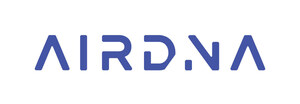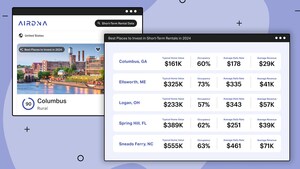DENVER, Aug. 17, 2021 /PRNewswire/ -- High levels of summer travel and scarce supply lead to higher rental prices, as new variant threats fail to stop summer travel.
July typically represents the peak season for short-term rentals in the U.S., and 2021 did not disappoint. AirDNA tracked more than 19.7 million nights sold in July 2021 — a 3.9% increase over 2019 levels (+23.9% vs 2020). With 10.6% fewer listings available for rent this summer compared to 2019, the supply/demand imbalance pushed U.S. short-term rental occupancy to an all-time record high of 74.9% in July 2021.
Occupancy was highest in coastal destination markets, where the average occupancy reached 81% for the month of July. Mixing mountains and coast, the Maine market of Down East/Acadia Coastal had the highest market occupancy in the U.S. of 88.4%.
Guests are Paying More this Summer
The average rate guests paid in July reached $294.23, which was 20.3% higher than July 2019 and 8.8% higher than July 2020. "The higher rates come from a variety of factors: guests are renting larger units, in more expensive cities like beach towns, and generally nicer units with more amenities," said Jamie Lane, VP of Research at AirDNA. "However, even after controlling for bedroom size and market, ADRs have still significantly increased throughout the pandemic."
ADRs are up in just about every market and room type, but the largest gains have been in the highest demand growth markets. Markets like Joshua Tree, CA; Steamboat Springs, CO; Park City, UT and Moab, UT have all seen ADRs increase by more than 40% over 2019 levels.
Delta Impacting New Bookings
As COVID-19 cases tick up, new short-term rental bookings have slowed. "For a second consecutive month, the rate of new booking was actively below that of 2019," said Scott Shatford, AirDNA CEO. "In July, booked nights were 4.9% lower than in July 2019 after exceeding 2019 levels from February - May 2021." Cancellations have begun to increase again, though at a much lower rate than in 2020 (20% in July 2021, compared to 121% in March 2020).
Even with demand starting to slow, the outlook for the rest of the summer and fall still looks promising. Demand is pacing an average of 17% higher than 2019 levels in August and September and 23% higher for the fall (October - December).
Contact: Madeleine Parkin, [email protected]
SOURCE AirDNA

Related Links
WANT YOUR COMPANY'S NEWS FEATURED ON PRNEWSWIRE.COM?
Newsrooms &
Influencers
Digital Media
Outlets
Journalists
Opted In





Share this article